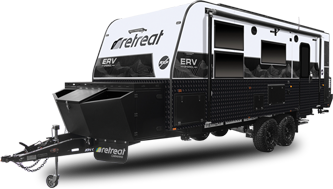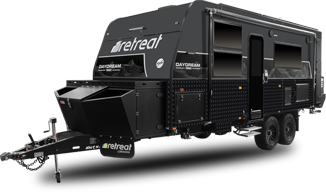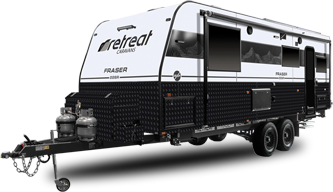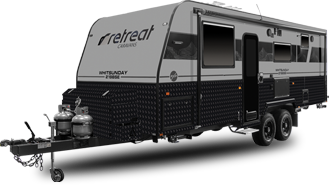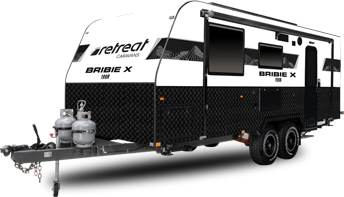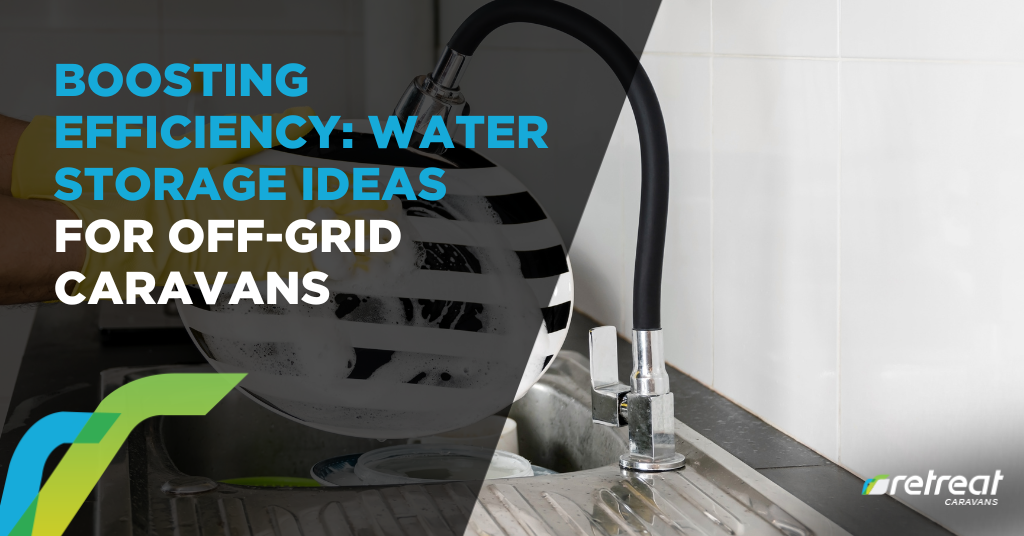
Boosting Efficiency: Water Storage Ideas for Off-Grid Caravans
When you’re travelling off-grid, water is everything. It’s your drink, your shower, your washing-up solution. Run out, and you’re packing up early. But with the right storage system, you don’t just stretch out your stay—you get to enjoy the ride without stress. From bushland tracks to beachside hideouts, having control over your water supply is what makes true freedom possible.
Luxury caravans often come kitted out with reliable water systems, but smart storage isn’t just for high-end setups. Whether you’re in a minimalist off-grid van or something with all the extras, knowing how to store and manage your water properly gives you more time doing what you love—and less time hunting for taps.
Why Water Storage Matters
You need water to live, sure—but on the road, you also need it to travel well. The moment your tanks hit empty, your options shrink. With proper planning, you can reduce your need to refill, stay out longer, and avoid being caught off guard.
Here’s what a good water setup should do:
- Hold enough for your planned stay
- Store grey water where required by law
- Handle rough travel and different climates
- Be simple to monitor and maintain
Off-grid caravans are built to break away from powered sites, but the biggest limiter is often water. That’s why smart design and storage planning are the real secret to going remote.
Choosing the Right Tank Setup
Most off-grid caravans carry 100 to 300 litres of water split between one or more tanks. How much you need depends on your group size, travel habits and how far off-grid you plan to go.
But capacity isn’t the whole story. You also need to think about:
- Where the tanks are placed (low and central is best)
- How evenly the weight is distributed
- How easy it is to fill, access and clean them
Many caravans use dual fresh water tanks, sometimes with one tank reserved for filtered drinking water. Some setups include a third tank dedicated to grey water, which is now required at many national parks and eco sites.
Systems like these are often part of broader electrical layouts, where smart power solutions for off-grid caravans ensure that water pumps, monitors and heaters run efficiently without draining your battery setup.
Monitoring Water Levels Accurately
If you don’t know how much water you have, you’re flying blind. Traditional float indicators can be vague or misleading. Digital water level sensors fix that. These display exact readings on a screen and help you plan ahead without second guessing.
Some systems connect to your caravan’s main control unit or even your phone, letting you check levels without lifting a lid. They also track grey water, which is handy for knowing when it’s time to empty.
As more travellers embrace sustainable off-grid caravan travel, smart water monitoring has gone from a luxury to a must-have. It helps you use water wisely and get the most from every litre.
Rainwater Collection for Extra Supply
When rain hits, don’t let it go to waste. Setting up a simple rain collection system can keep you going for days without a tap in sight.
A typical DIY system might use:
- Gutters built into the roof or awning
- Mesh screens to block leaves and bugs
- A food-safe hose to feed water into your tank or bladder
- A first-flush diverter to discard the initial dirty runoff
Collected rainwater can be used for showering, cleaning or filtered for drinking. It’s especially useful during multi-day stays in one location, letting you stretch your supply without moving the van.
Rain-harvesting setups are common in resilient off-grid caravan designs, giving travellers a way to live lighter and refill on the fly in rain-prone areas.
Portable and Collapsible Water Storage
You don’t need to rely solely on built-in tanks. Extra containers give you flexibility—and insurance. They’re useful for:
- Transporting water from creeks or campgrounds
- Reserving backup water in case of leaks
- Separating potable and non-potable water
Hard jerry cans work well but eat up storage space. Collapsible bladders, on the other hand, pack flat and weigh next to nothing when empty. Keep one in your tow vehicle or boot, just in case.
Some setups even use portable grey water tanks for dumping convenience or as a temporary holding solution during extended stays.
Filtering and Purifying Water Safely
Not all water is created equal. Even clear tap water can carry taste, smell, or bacteria—especially from old fill points. Filtration makes sure what you’re drinking is safe.
A full filtration setup usually includes:
- A hose-end filter for filling (to catch sediment or rust)
- An internal tank treatment to prevent algae
- A drinking water filter at the tap (carbon, ceramic or UV)
Some travellers use two-stage drinking filters—great for bores, dams or creek sources. Others stick with inline carbon filters and sanitising tablets when filling.
Just remember: filter it going in, and again going out. This double-layer approach keeps your tanks clean and your body safe.
Grey Water Storage and Disposal
Grey water is the used water from your sink and shower. It may look harmless, but it can still harm local environments—and it’s often regulated.
That’s why more off-grid caravans now carry:
- A built-in grey water tank (80–150 litres)
- A drain hose with secure fittings
- A secondary container for portable dumping
Sites with self-contained rules require sealed tanks with proper dump point disposal. Even when not required, using one shows respect for the land and helps keep sites open to future travellers.
Use eco-friendly soaps and limit grease going down the drain. Cleaner grey water means less smell, fewer bugs, and easier disposal.
Weather-Proofing Your Setup
Heat and cold can mess with your water system fast. In hot areas, tanks can overheat and turn water foul. In cold places, water can freeze and crack pipes.
To keep your system steady:
- Insulate pipes and wrap tanks in thermal layers
- Use UV-resistant tanks and shield exposed hoses
- Install drain valves in frost-prone zones
- Avoid running clear lines across hot exterior walls
Whether you’re camped out in the red centre or waking up to snow in Tassie, protecting your water setup ensures it works no matter where you are.
Integrating Water with Your Power System
Your water pump, hot water system, and filter might all need power. If you’re running solar or lithium batteries, it’s worth syncing your water system with your electrical design.
Key things to check:
- Does your pump draw more power than your battery can handle?
- Are your filters manual or electric?
- Will your hot water system run on gas, 12V or 240V?
Many off-grid travellers use power management systems that track water pump usage, helping reduce battery drain. Smart switches or pump timers can also stretch your system further.
The goal is simple: your water should be ready when you are—without draining your setup dry.
FAQs
1) How much water do I need for off-grid travel?
Expect to use 10–15 litres per person per day. That includes drinking, cooking, washing and quick showers. A couple might need around 150–200 litres for a week off-grid. Always plan for extra—heat, leaks and long stays can eat through your supply faster than you expect.
2) Can I drink water straight from my caravan tank?
Yes, if it’s filtered and the tank is clean. Use food-grade hoses when filling, treat the water if needed, and filter it again at the tap. Don’t drink from tanks that haven’t been used in months without flushing and sanitising them first.
3) What’s the best way to clean caravan water tanks?
Drain completely, then flush with warm water and a tank cleaner or baking soda solution. Let it soak, rinse thoroughly and repeat if needed. Clean your tanks every few months—or after using unknown water sources. Always run clean water through your lines before your next trip.
4) Do I really need a grey water tank?
If you’re staying in national parks or self-contained-only camps, yes. Even if not required, carrying grey water keeps you welcome in more spots and helps protect the environment. Portable grey tanks work too, but make sure they’re sealed and easy to empty.
5) What kind of backup water should I carry?
A few collapsible containers or jerry cans go a long way. Aim for 20–40 litres as a backup. These can be filled at creeks, taps or service stations and carried back to camp. Keep them separate from your drinking supply if they’re unfiltered.
Every Litre Counts When You’re Off the Grid
Water might seem like a basic thing, but once you’re travelling far from taps and towns, it becomes your most important resource. A good water system gives you freedom. The freedom to camp longer, explore deeper, and move at your own pace.
If you’re looking to level up your off-grid setup and explore Australia’s remote beauty without compromise, checkout Retreat Caravans. We’re building caravans tough enough to take you anywhere—and keep you there.
See below for our full range of caravans, all carefully designed with you in mind:



